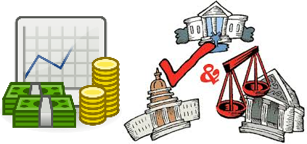Economics: Tax, Borrow, Spend
Introduction to Government Involvement: Discusses the impact of government actions on the economy.
Spending and Economic Growth: When consumers spend, production increases, leading to more jobs.
Gross Domestic Product (GDP): Over the last century, GDP has consistently increased due to higher production and sales.
Consequences of Reduced Spending: Lack of spending leads to decreased production and job losses.
Role of the Federal Reserve (FED): The FED prints money and influences the economy through interest rates.
Bank Reserve Requirements: Adjusting bank reserve requirements affects how much money banks can lend.
Government's Economic Tools: The government can influence the economy through taxes, spending, and borrowing.
Paradox of Government Involvement: Contradiction exists in government actions affecting the economy positively or negatively.
Impact of Raising Taxes: Higher taxes reduce disposable income, leading to decreased spending and economic shrinkage.
Impact of Lowering Taxes: Reducing taxes increases disposable income, encouraging spending and economic growth.
Government Spending: The government invests in various sectors, including education and infrastructure, stimulating the economy.
Examples of Government Spending: Funds are allocated to teachers, construction workers, and agricultural producers.
Consequences of Low Government Spending: A lack of government spending results in lower income for workers and reduced economic activity.
Tax Money Utilization: Tax revenue is used for public services, which can benefit the economy even if taxes are high.
Trade-offs in Taxation: Higher taxes can fund important services but limit individual spending power.
Government Borrowing Explained: The government borrows money to fund services when tax revenue is insufficient.
Savings Bonds: Individuals can lend money to the government through savings bonds, earning interest over time.
Finite Money Supply: The economy has a limited amount of money, which can be impacted by government borrowing.
Effects of High Government Borrowing: Increased borrowing can limit available funds for consumers, leading to reduced spending.
Consumer Spending vs. Government Spending: Consumers are often viewed as better at allocating resources effectively compared to government.
Inefficiency in Government Spending: Government spending may not always lead to the most productive outcomes.
Potential for Economic Growth: Allowing consumers to spend freely can lead to better economic growth.
Consequences of Government Borrowing: High borrowing decreases consumer funds, affecting overall economic activity.
Balancing Government Spending and Borrowing: The challenge lies in finding the right balance between government involvement and market efficiency.
Conclusion on Government's Role: The paradox remains whether government intervention is beneficial or detrimental to the economy.



